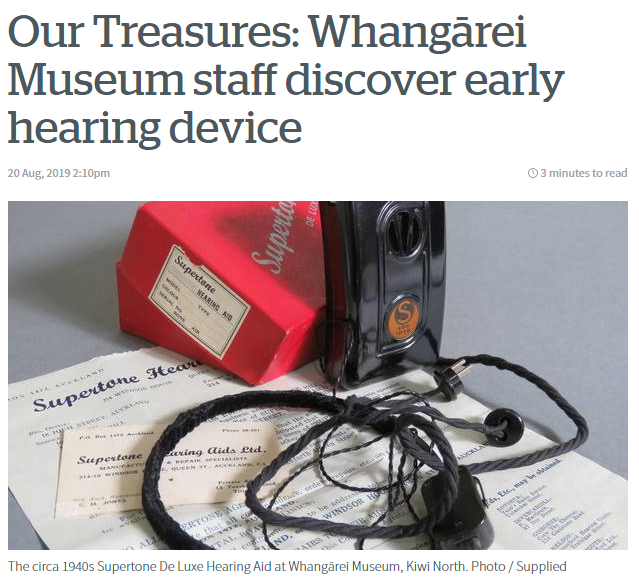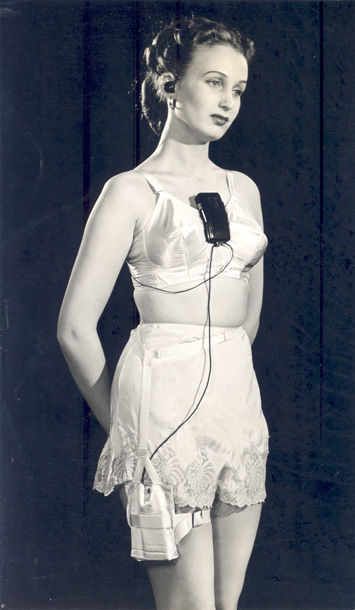
Working with museum collections can be a bit like entering Aladdin’s cave, often not knowing what you might discover during the course of the day. It is also often a revelation into how far technology has progressed.
A prime example of this occurred recently when staff at Whangarei Museum came across a red carboard box with a mechanical device stored inside which looked similar to a pocket-sized radio, and were shocked to find it was a rather bulky early style of hearing aid resembling nothing like the tiny ones produced today.
Hearing aids have been around longer than the English language and for centuries attempts have been made to help those hard of hearing by developing ingenious ways to amplify sounds, some more effective than others.
As early as the 13th century, those with impaired hearing were using crude devices fashioned from hollowed out animal horns and seashells. As primitive and unsightly as they were, these hearing devices remained in use until the 18th century when they were superseded by elaborate ear trumpets.

These acoustic apparatuses were a more sophisticated, powerful and effective way of amplifying and directing sound but the use such trumpets frequently provoked ridicule and amusement. Ear trumpets and subsequent speaking tubes were not ideal, but remained the only option for over a century.
During later periods other fantastical hearing mechanisms were invented. Acoustic headbands called Aurolese Phones, Acoustic Fans, Audiophones, Dentaphones, Acoustic Chairs and even Beard Receptacles were all designed to help deafness. Often aids were disguised and hidden in couches, clothing, hair and accessories. The drive toward ever-increasing invisibility was often more about hiding the individual’s disability from the public than about helping them cope with their hearing problem.
As technology improved with the invention of the telephone and electricity, so did the effectiveness of the hearing aids being produced, going through multiple changes over the following decades.
.jpg?1566780236460)
By the beginning of the 20th century manufacturers were able to control the loudness, frequency and distortion of sounds, although the devices still remained large and problematic.
From the 1920’s hearing aids began using vacuum tubes and by the 1940’s miniature tubes made it possible to produce smaller hearing aids. The Supertone De Luxe hearing aid donated to the Museum by the Hawken family was one of these more modern designs and was manufactured by Supertone Hearing Aids Ltd, Ponsonby, Auckland in the early 1940’s.
These wearable hearing aids, although more portable required a microphone amplifier unit strapped to the body and were concealed under or attached to the user’s clothing. Models like the Museum’s hearing aid, also required the use of a cumbersome battery pack that was strapped to the user’s leg.
It wasn’t long before new technology finally saw the production of hearing devices with all components combined into one portable pocket-sized unit.
Capitalizing on the new technology of the transistor in 1950’s, even smaller devices were formulated which could finally be worn either completely inside or behind the ear.
We’ve come a long way from the ear trumpets and strapped battery packs of yesteryear’s rudimentary hearing aids, but with Museum items like the Supertone De Luxe we can gain a much better understanding of their evolutionary journey to today’s minute counterparts.
Natalie Brookland
Collections
7/8/2019